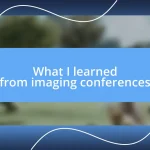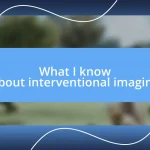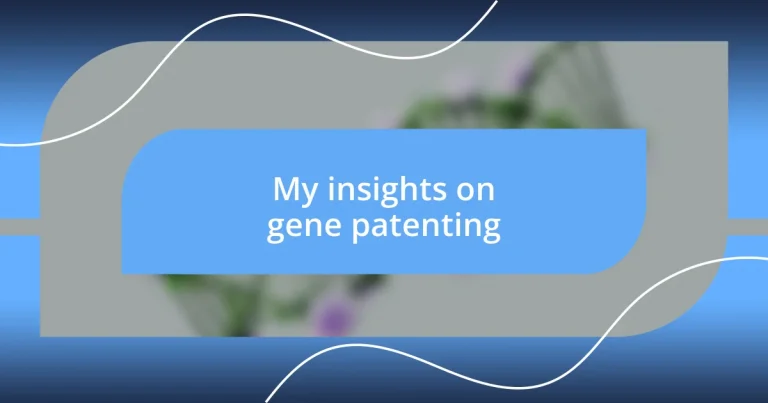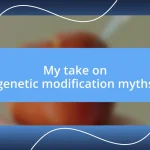Key takeaways:
- 1980: U.S. Supreme Court’s ruling in Diamond v. Chakrabarty allows patenting of genetically modified organisms, marking the beginning of gene patenting.
- 2013: U.S. Supreme Court ruling in the Myriad Genetics case declares that naturally occurring genes cannot be patented, significantly impacting research accessibility.
- Ongoing debates: Ethical concerns about gene ownership and accessibility persist, highlighting tensions between profit motives and public health interests.
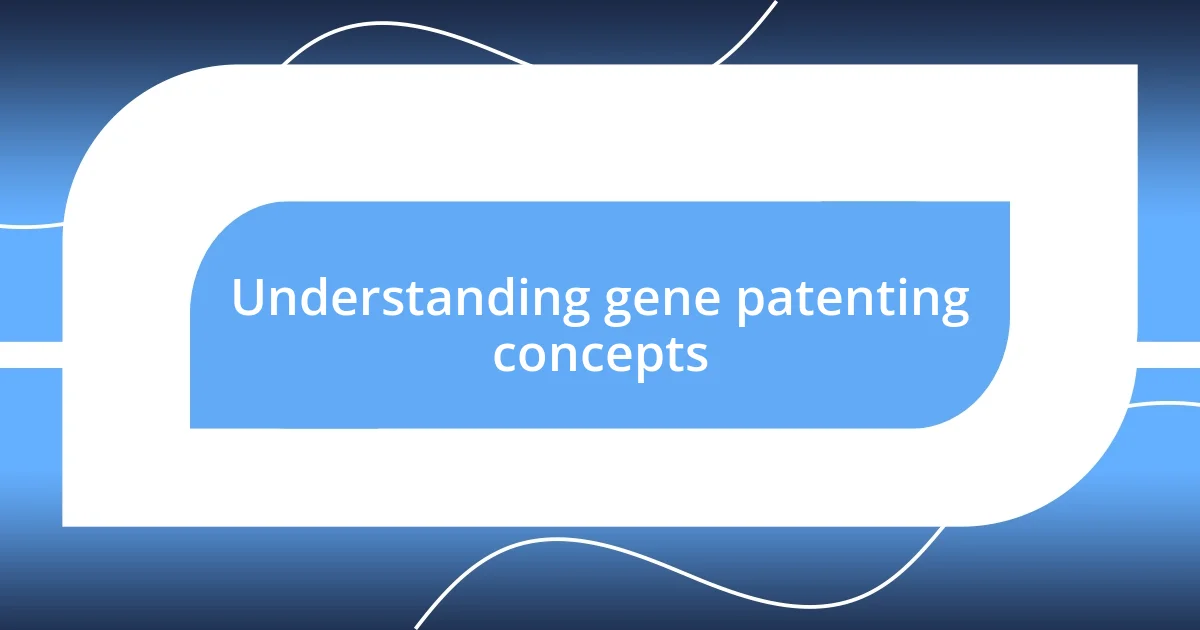
Understanding gene patenting concepts
Gene patenting essentially allows companies or individuals to own rights to specific sequences of DNA, which can have profound implications for research and medicine. I remember attending a conference where a brilliant scientist shared how a gene patent prevented her from freely conducting research on a crucial genetic disorder. Isn’t it striking to think that just a few sequences of letters could limit the progress we make in understanding diseases?
At its core, gene patenting raises essential questions about ownership and innovation. If one entity can claim rights to a natural phenomenon, does that hinder collaboration among researchers? I’ve seen firsthand how researchers can become hesitant, fearing legal repercussions over what they perceive as shared knowledge. This tension between potential profit and public good is something that really makes me contemplate the ethics behind it all.
Many argue that patenting genes can incentivize investment in essential research, yet I can’t help but wonder if it stifles creativity. When I hear stories of researchers unable to explore potential cures due to patent restrictions, I feel a sense of urgency for a more balanced approach. Isn’t the ultimate goal to advance science and improve lives, rather than just protecting a financial interest?
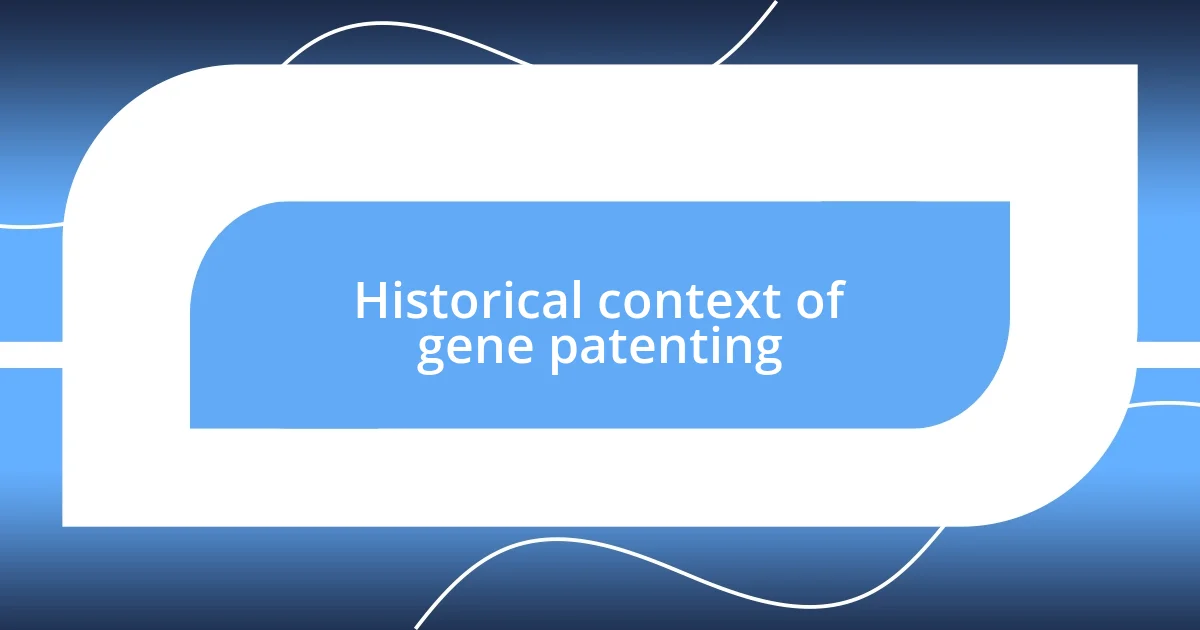
Historical context of gene patenting
The landscape of gene patenting began to take shape in the 1980s, particularly after the U.S. Patent and Trademark Office (USPTO) allowed the patenting of genetically engineered organisms. I vividly recall reading about the landmark case of Diamond v. Chakrabarty in 1980, where the Supreme Court ruled that a genetically modified bacterium could be patented. It was a pivotal moment, opening the floodgates for many biotech companies to patent various biological discoveries. This shift marked the beginning of a complex relationship between innovation and ownership that many researchers grapple with today.
As the years passed, the complexity of gene patenting increased, particularly with the advent of the Human Genome Project in the 1990s. The excitement of mapping human DNA was palpable among my peers; I felt a shared sense of hope about what this would mean for medical advancements. Yet, it soon became apparent that patenting genes would lead to a maze of legal challenges. I’ve seen collaborations crumble under the weight of licensing fees, which left me questioning if we were truly fostering the spirit of scientific inquiry or merely creating barriers to progress.
The debate intensified in the early 2000s, particularly around the ethical implications of owning genetic information. I remember discussing with colleagues how patients with genetic disorders often felt like commercial entities themselves, as their genes were patented for profit. This emotional toll is often overlooked in the legal discussions surrounding gene patenting. As we continue to explore this intricate dance between science and law, it’s crucial to consider not just the economic impact but the human stories behind the patents.
| Year | Event |
|---|---|
| 1980 | Supreme Court rules in Diamond v. Chakrabarty, allowing patenting of genetically modified organisms. |
| 1990s | Human Genome Project generates excitement but leads to complex patent issues. |
| 2000s | Growing ethical concerns over ownership of genetic information and its implications for patients. |
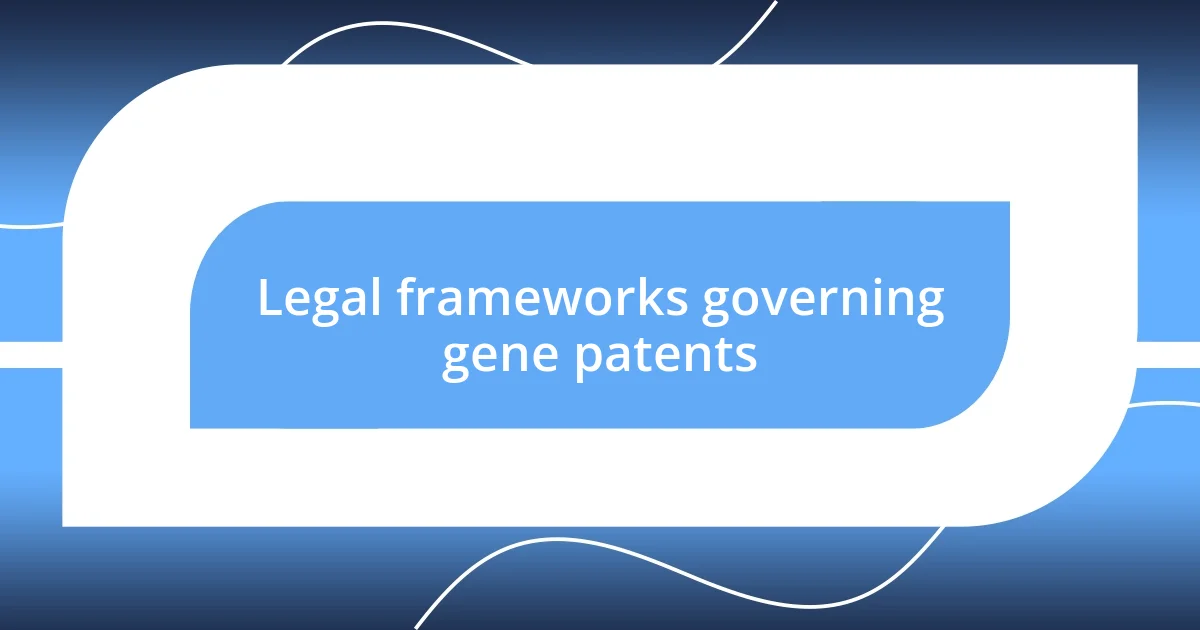
Legal frameworks governing gene patents
The legal frameworks governing gene patents vary significantly across countries, reflecting diverse approaches to balancing innovation with accessibility. In my experience, the U.S. system, governed by the Patent Act, allows for broad interpretation of what constitutes patentable subject matter. I recall a discussion with a legal expert who pointed out that although patents can drive investment in biotechnology, they can also result in monopolies that suppress competition and hinder research.
Here are some key points regarding the legal frameworks:
- U.S. Patent Act: Facilitates broad patent eligibility, including genes and their functions.
- European Patent Convention (EPC): Provides a more cautious stance, allowing gene patents but restricting patents on isolated genes and genetic information.
- World Intellectual Property Organization (WIPO): Focuses on harmonizing international patent laws but does not enforce specific guidelines on gene patenting.
- Myriad Genetics Case: A landmark ruling that altered the legal landscape by stating that isolated DNA cannot be patented, thereby setting a precedent for future cases.
I’ve spoken with researchers frustrated by the complexity of navigating these legal waters. They often describe feeling like they’re walking on eggshells while trying to advance their studies. The competing interests of patent holders can lead to a situation where vital research slows, causing a ripple effect in the medical community. The emotive weight of these stories is compelling; it highlights the stark contrast between corporate interests and the pursuit of scientific discovery.
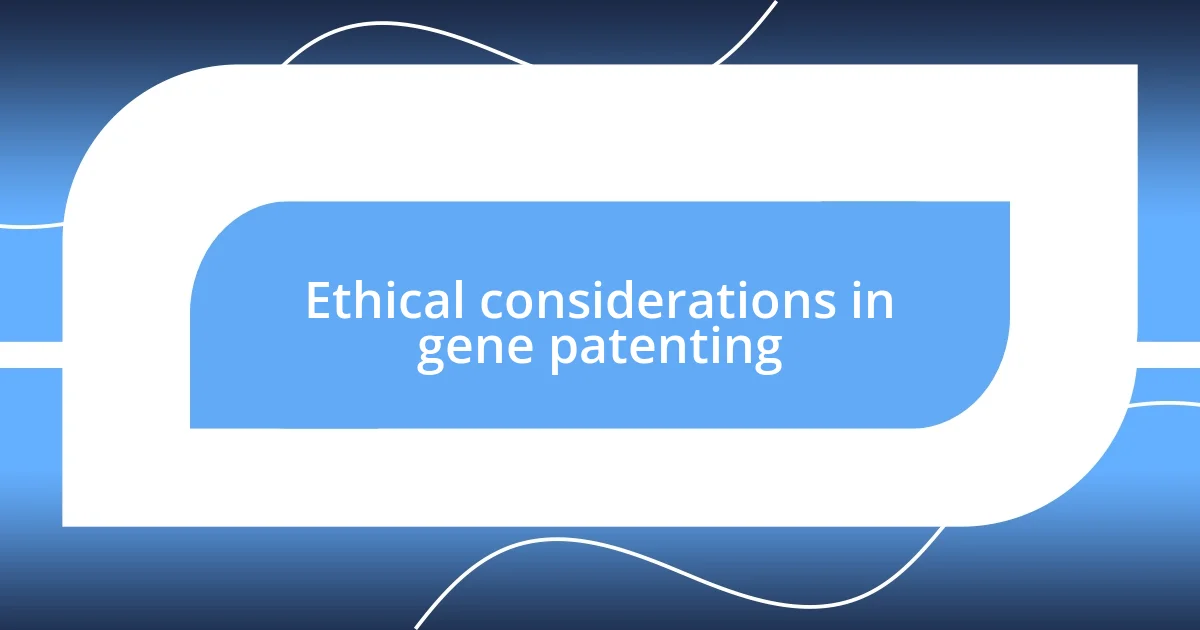
Ethical considerations in gene patenting
The ethical considerations surrounding gene patenting often evoke strong emotions and passionate debates. I’ve found myself wrestling with the implications of profiting from something as fundamental as human DNA. It raises the question: should we, as a society, allow ownership of the very building blocks of life? This dilemma often weighs heavy on those of us who believe in the intrinsic value of sharing knowledge for the greater good.
Moreover, there’s the principle of accessibility to consider. I can’t help but reflect on conversations I’ve had with patients who feel lost in the maze of patents that dictate access to necessary treatments. They express a sense of injustice, knowing that their very genetic makeup could be patented, making life-saving therapies unaffordable. It’s heartbreaking to think that the pursuit of profit could stand in the way of someone’s health and future.
With each passing year, it’s becoming clearer that gene patenting not only impacts innovation but also the ethical landscape of healthcare. I remember discussing this with a biochemist friend who shared her frustration as research projects faced hurdles due to licensing fees. It made me wonder—when did the passion for discovery morph into a battle for financial gain? The need for a balance between protecting innovation and ensuring public access to genetic advancements has never been more urgent.
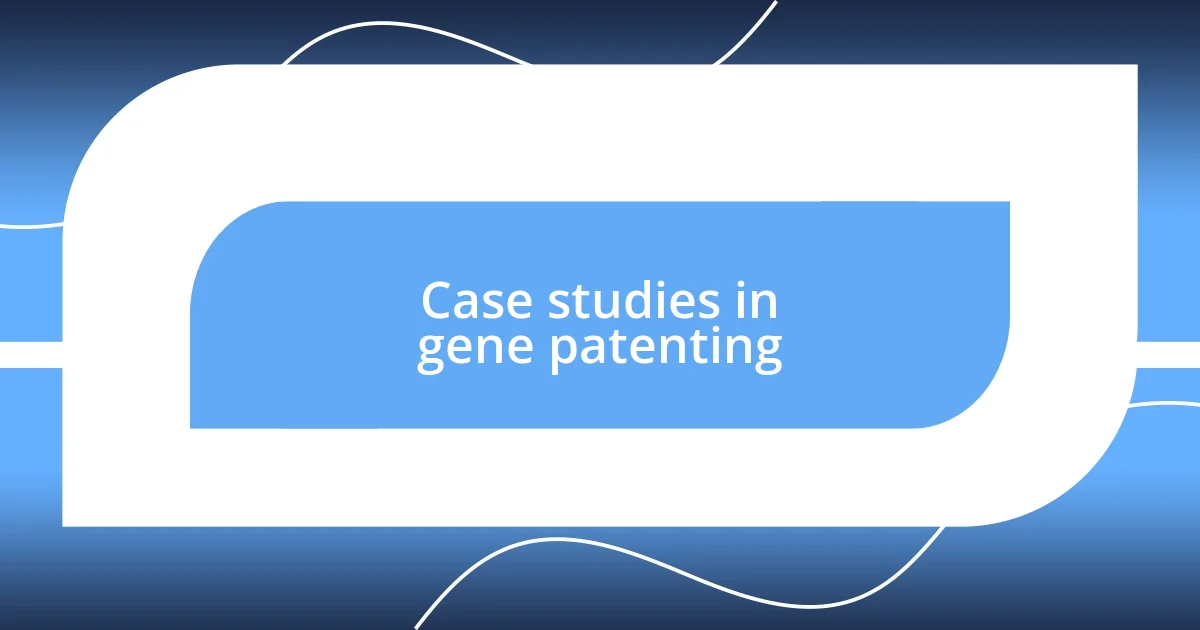
Case studies in gene patenting
One notable case in gene patenting is the Myriad Genetics saga, which I find particularly striking. The ruling by the U.S. Supreme Court determined that naturally occurring genes cannot be patented. I remember reading early reactions from scientists who felt a mix of relief and hope; the decision opened doors for more research without the threat of legal repercussions. That moment felt like a turning point, raising the question: what does innovation look like when everyone has access to the same building blocks?
Another example that comes to mind is the case of the Oncomouse, a genetically modified mouse patented by Harvard University. Seeing how a living organism could be restricted by a patent struck me as troubling. I spoke with a biologist who expressed her concerns about how such patents could impede collaborative research. It made me ponder whether the pursuit of knowledge should be an open exchange or a commodified venture.
A more recent case involved CRISPR technology, a revolutionary tool in genetic editing. Initially, I was excited about the potential applications, but as debates over patent rights heated up, I began to see the darker side of advancement. I chatted with a fellow researcher who lamented the stifling effect of these patents on innovation. “How can we innovate,” he asked, “when the most groundbreaking tools are tied up in legal disputes?” It’s a fair question that resonates deeply with those of us committed to the free flow of scientific inquiry.



